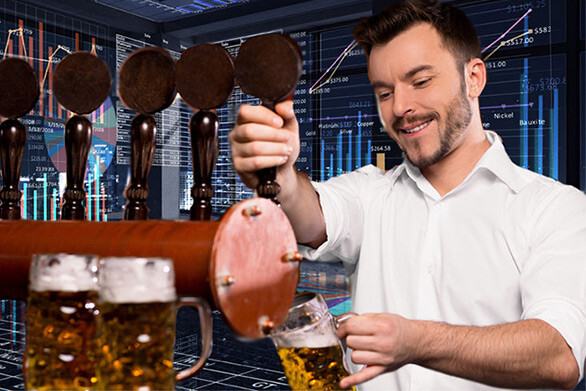Bar and pub owners increasingly appreciate the value of big data to their operations. Locked inside of POS systems, purchase orders and inventory records are invaluable insights that can lead to bigger profits.
Knowing what and when their customers like to drink, and where waste is occurring, helps keep the drinks flowing and the profits growing. An untimely and unexpected keg
Here are several steps businesses and bars have been taking to use big data analytics to help them grow their bottom line in a significant way.
Big Brands Leading the Way
Any size company can benefit from utilizing innovative big data analytics. For example, how might a large beer brand utilize big data to help make their customers happy and their company more prosperous? Heineken uses big data to analyze their customers’ buying habits and improve and better interact with their customers’ buying experience.
From social media to real-time mobile marketing, to in-store analytics, and “connected bottles” that trigger LED lights when clinked, Heineken is an industry leader in using big data to their advantage.
Smaller Sized Bars Also Benefit
But outside of major brands, what steps can individual bars and restaurants take to generate valuable insights from their data?
The Israeli startup WeissBerger targets such customers, specializing in “turning drinks into data” through connected bars. Using an array of technologies involving real-time data, the Internet of Things, and big data analytics, the company aims to help restaurant and bar owners improve profitability and customer satisfaction.
From consumption monitoring to customer engagement, operational enhancements, and dynamic promotions, WeissBerger aims to provide a more connected experience between bars and their patrons.
Flowmeter Data Offers Value to Anyone With a Keg
A large portion of the cost-savings achieved by a company like Weissberger comes from the installation of flowmeter devices on beer kegs. Flowmeters can prevent unnecessary expenses incurred from over pours and identify if employees are giving away free drinks (i.e. unauthorized pours). Flow meters can also show when supplies are running low and prevent unnecessary orders or early keg trade-ins and replacements.
Even seeming harmless issues like foamy kegs can lead to significant losses if unchecked over time. For example, a pitcher of wasted foam on every keg can mean losses of roughly $5,000 per year for an establishment selling just 500 kegs a year.
Connecting With Customers
Despite much spending in market research and traditional marketing, the global alcohol industry operated without critical “last mile” information on their customers up until the last couple of years. This led to massive missed opportunity when it came to planning sales and marketing promotions.
The use of IoT principles and big data analytics has led to endless new customer insights for leading brands recently. For example, Carlsberg learned that 70% of their product consumption occurs from 8pm-10pm in cities vs. just 40% in suburbs. Armed with this data, they can now experiment with dynamic pricing based on real-time data.
Constructive Analysis
At a period when consumer habits are constantly in flux, big data has become a tremendous help to bar owners and brewers alike. Once gathered, data can be used to draw more customers to bars or beer displays, improve customer satisfaction, and reduce waste.
The next challenge for big data and the beverage industry? Perhaps using predictive analytics to reduce or eliminate customers’ hangovers… Cheers!

